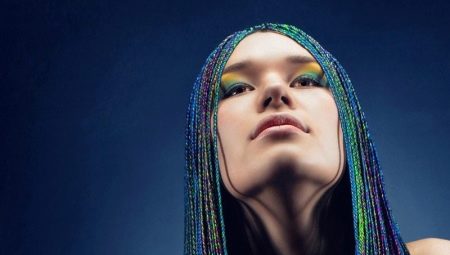Since ancient times, it is customary to consider the braid to be the decoration of a woman. And today, with the help of many small braids, you can stand out in any situation, without fundamentally changing your image. At the same time, they can be braided both on short and long hair. The proper implementation of such a hairstyle and some useful subtleties will be described below.

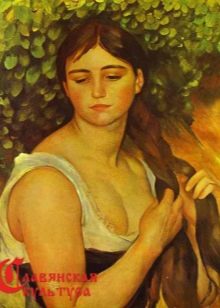
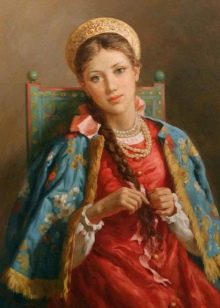
What is the name of the hair from small braids?
Such braids are especially popular among young girls and little girls. However, they are ideal for adult women, especially when it comes to outdoor activities or the desire to simply change their appearance simply and without high costs.
This weaving of small braids along the entire length of the hair is called afro weaving, and the hairstyle itself is called African braids. Initially, such a hairstyle, due to the specific living conditions and hygiene, was worn only by the inhabitants of African tribes, hence the name.
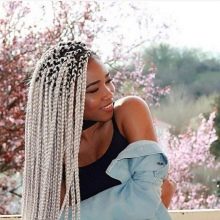
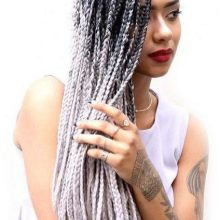
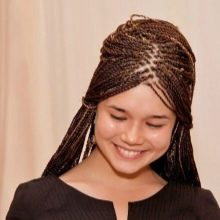
But so they are called ordinary inhabitants. Professional stylists and hairdressers call this rasta hairstyle. And today there are many options for its creation.

To get a lot of braids on your head simply and quickly, it is not necessary to go to the salon at all - you can create such a hairstyle yourself at home. At the same time, braids can be braided both ordinary and with multi-colored threads.
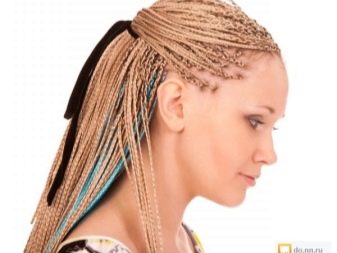
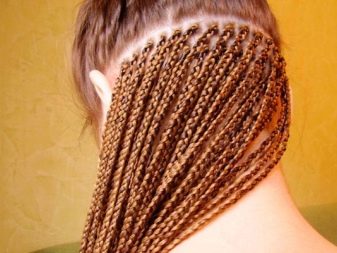
How to braid?
On short hair
Before you start creating such a bright and unusual hairstyle, it is necessary to prepare the necessary tools:
- two mirrors, preferably with magnification;
- a comb with a thin and long handle;
- mousse for hair;
- small rubber bands.
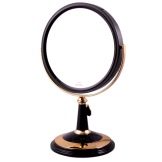
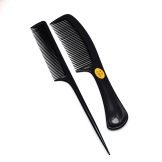


If the hair length is less than 7 cm, then it is necessary to use overhead strands - kanekalons. They are attached as close to the roots of their hair as possible. At the same time, the hairstyle can vary depending on what color the selected artificial hair will be.
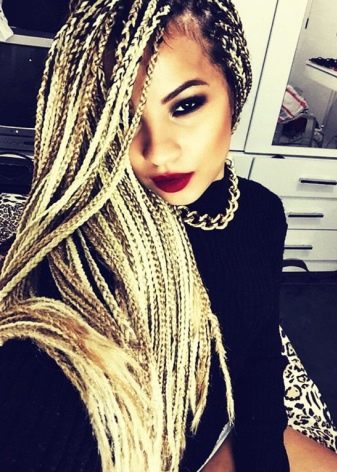
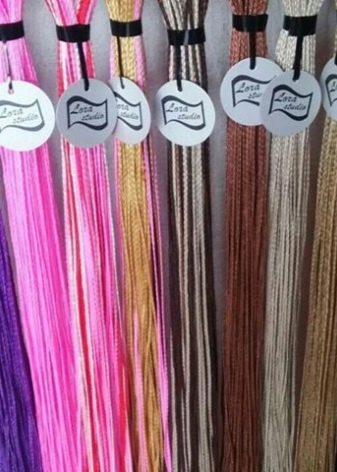
There is no significant difference between braiding weaves to ourselves and to another person. The main difference is that, when a girl does her hair, she needs to start braiding little pigtails from the temporal zone. But when the hairstyle is done to another person, then the work begins with the back of the head.
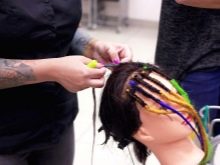
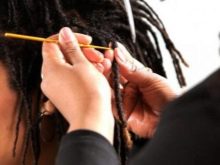
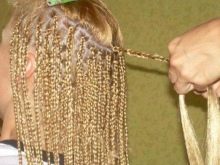
In general, the sequence of actions will be as follows:
- hair is thoroughly combed;
- apply a small amount of mousse to them, instead of it you can use a drop of wax or gel for styling hair: these funds will help eliminate excessive hair fluff and make the braiding process easier;
- all curls are divided into 4 zones, and the strands themselves are made very thin - no more than 1 cm in thickness;
- each strand is divided, in turn, into three, and proceed to the very creation of a hairstyle.
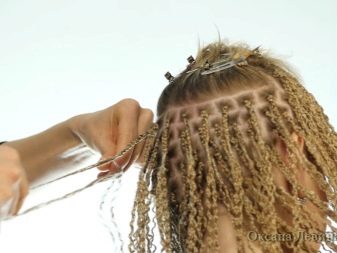
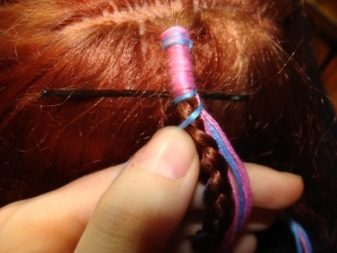
Braids are woven with ordinary three-strand weaving. For this, 1 and 3 strands are held with the thumb and little finger. The first strand is thrown on the second as close to the roots as possible, then the strands are interchanged. This operation is repeated until the entire strand is braided. A thin elastic band is put on the end of the pigtails. Instead, you can use special threads.
Two mirrors are required if weaving is done independently. They are set opposite each other so that it can be seen how the work progresses while braiding hair on the back of the head.
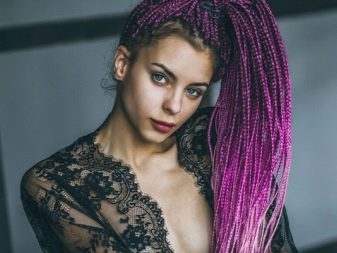
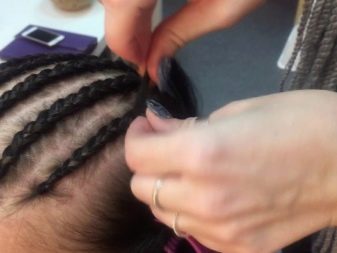
On long
In general, the process of work here will be the same as when braiding into short strands. The only difference is that the work will take more time and effort.
But in this case, there are options for the modernization of hairstyles. Instead of overhead strands, it is quite possible to use various colored threads. They can be woven into each strand, and only in some of them - there are a lot of options.
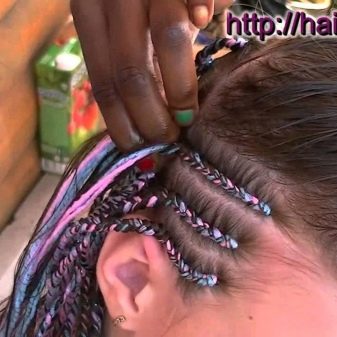

Afro-braids with weaving waterfall also look very unusual. But only a master can do such work.
Before weaving, it is best not only to visually divide the hair into certain zones, but also to tie them with rubber bands. So loose strands will not get in the way and get confused during work.
On long hair, rasta can be performed a little differently. To do this, the already braided pigtails are combed with the fingers in the opposite direction. The hairs, or rather, the ends are fluffy, and the hairstyle itself becomes more magnificent and slightly tousled.
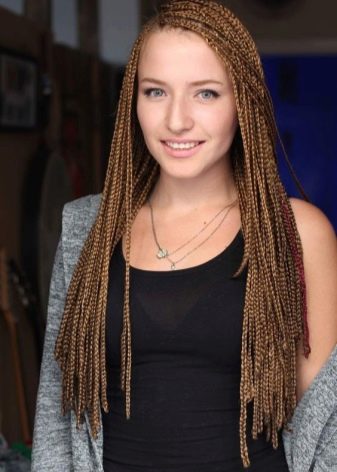
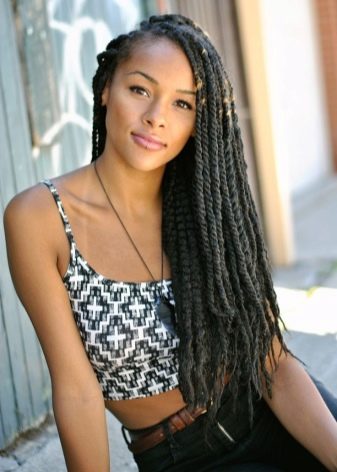
Advantages and disadvantages
This hairstyle has a lot of advantages:
- it allows you to change your image, regardless of the length of the hair;
- braids can be worn for several months in a row, just creating new hairstyles on their basis each time;
- Rasta can significantly save your time on the creation of the daily simplest styling.

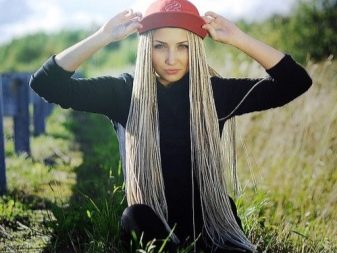
She has some disadvantages:
- the creation process is too long: depending on the length, thickness and thickness of the hair, weaving can take from 3 to 10 hours;
- at first there is a constant feeling of tightness on the head due to the strong compression of the basal zone of the hairs;
- if the pigtails were braided too tight, the hair ceases to receive the nutrition they need correctly.
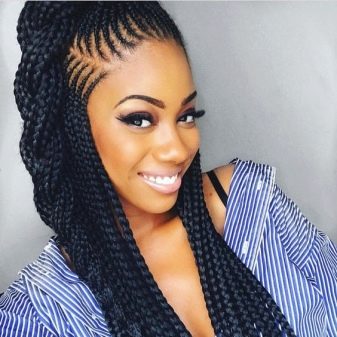

Do not forget that such a hairstyle will look beautiful only with proper care for it. Otherwise, after a month from the former beauty there will be no trace.

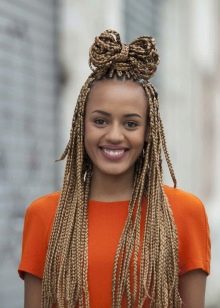
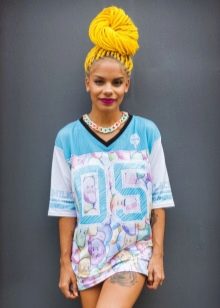
How to care?
The main thing is proper shampooing. Experts recommend washing your hair with such a haircut only once every seven days. In this case, it is necessary to choose shampoos for normal hair. Means 2 in 1 in this case are not suitable.
Particular attention should be paid to thorough rinsing of the head: the shampoo is clogged deep into the braids, and it is quite difficult to wash it from there. Water temperature should not be higher than 36 degrees.
After washing, the pigtails are slightly wrung out with the palms of your hands, and then your head is wrapped in a large towel, which is preferably preheated.
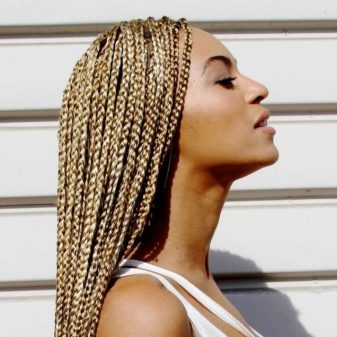

Using a hairdryer is not recommended, but if there is such a need, then the air should be only cold.
Do not forget about the correction. Once a month and a half, it is necessary to remove the fallen hairs and, if necessary, to braid the braids on the temporal and occipital parts. Otherwise, regrown hair roots will grow ugly and messy.
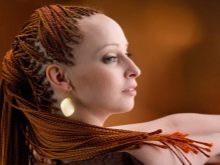
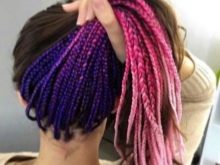
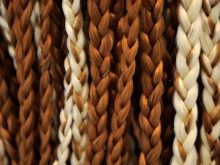
About how to quickly braid a lot of braids on her head, see the next video.
